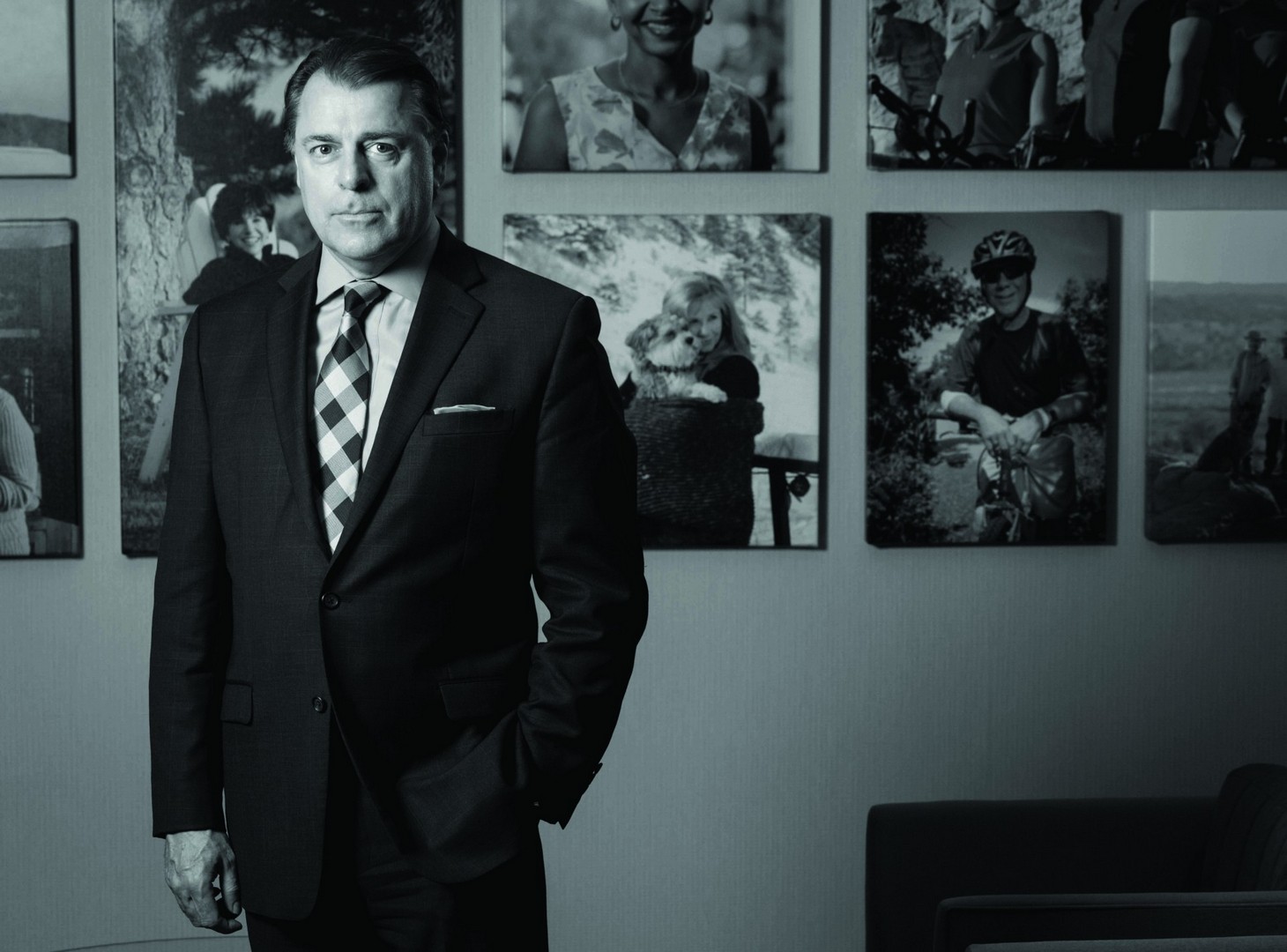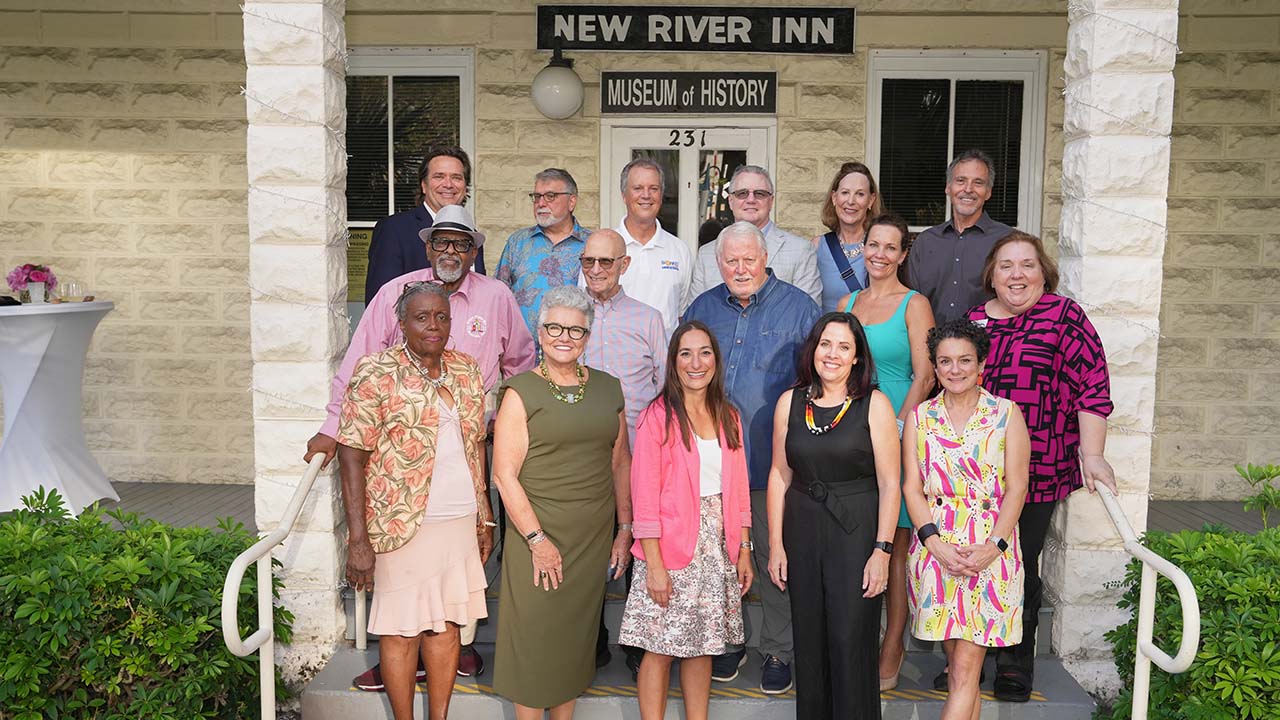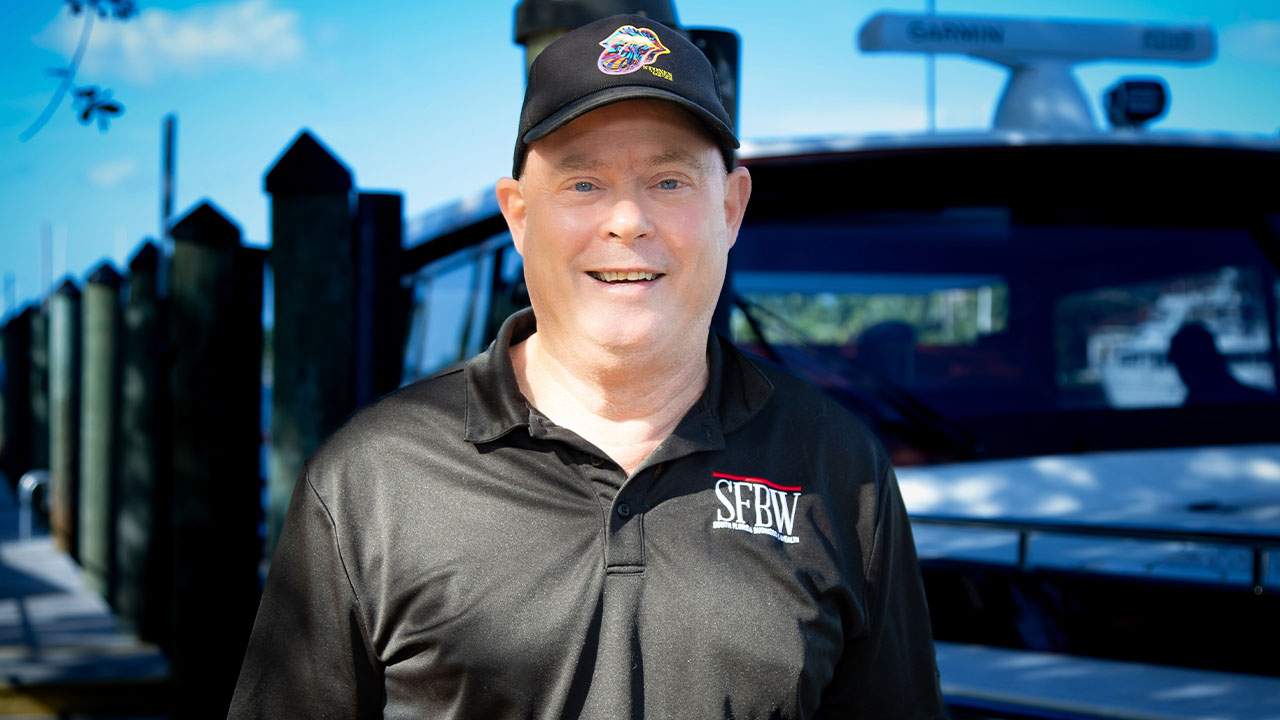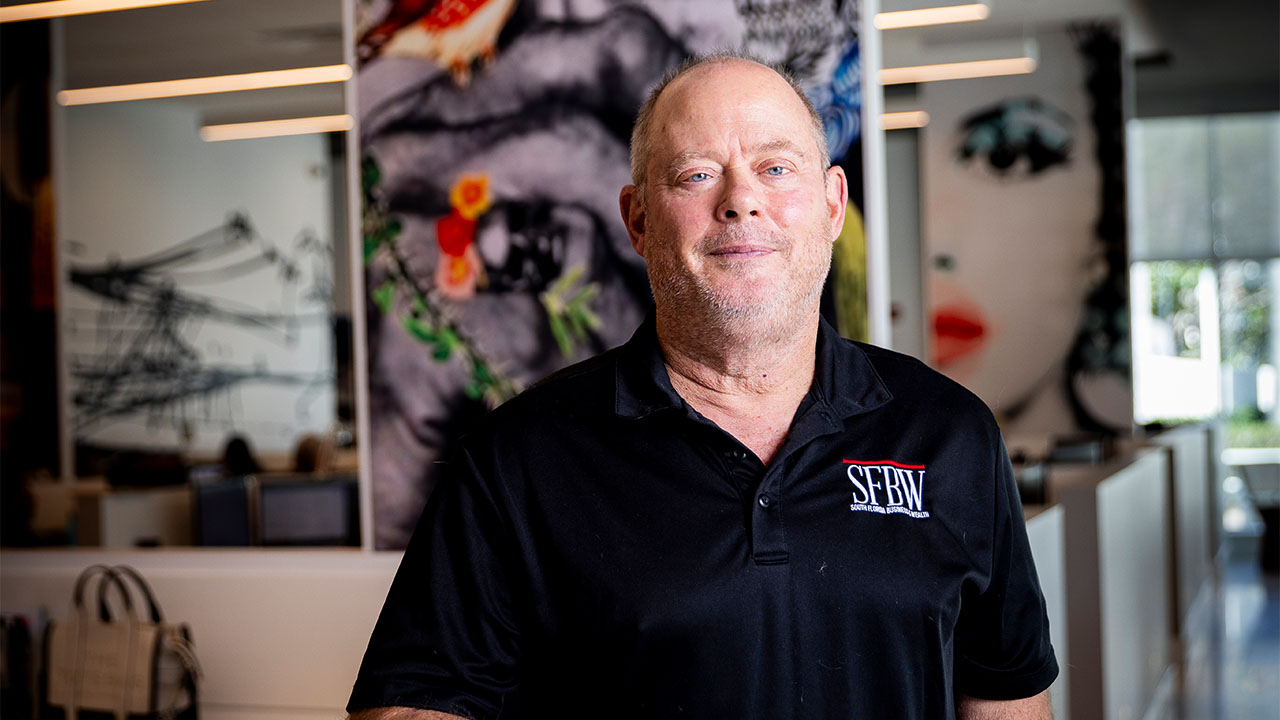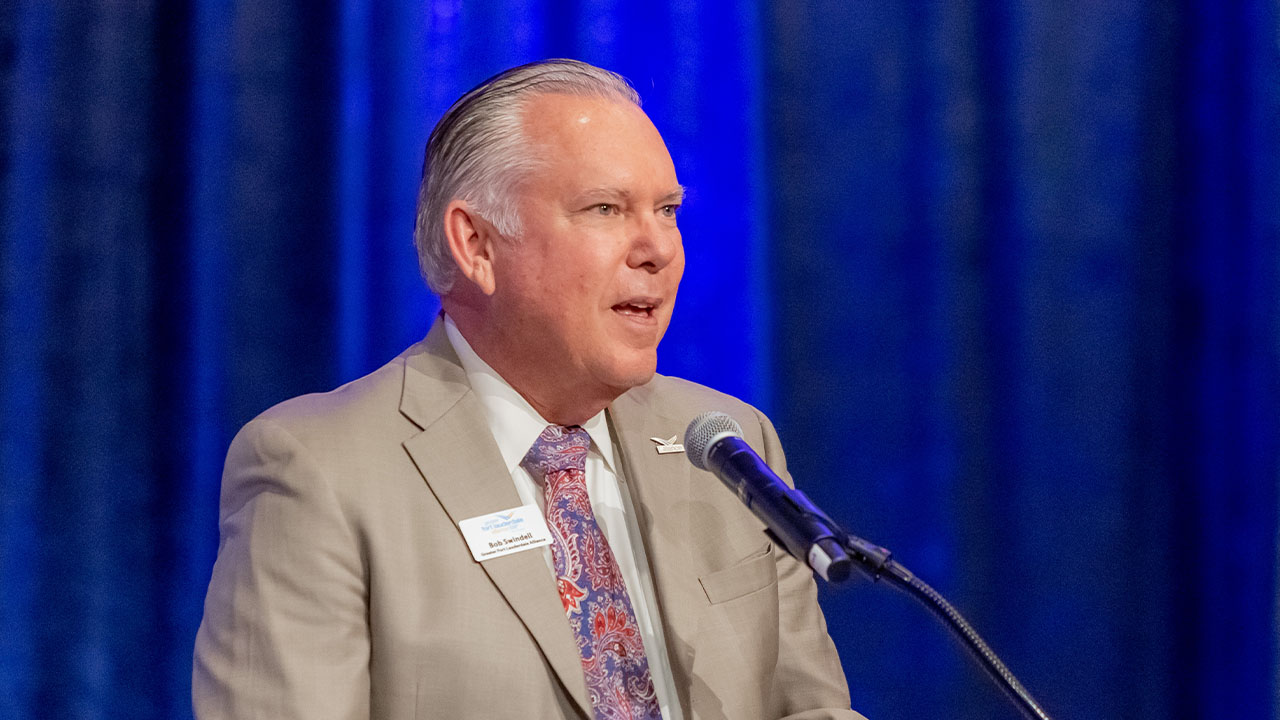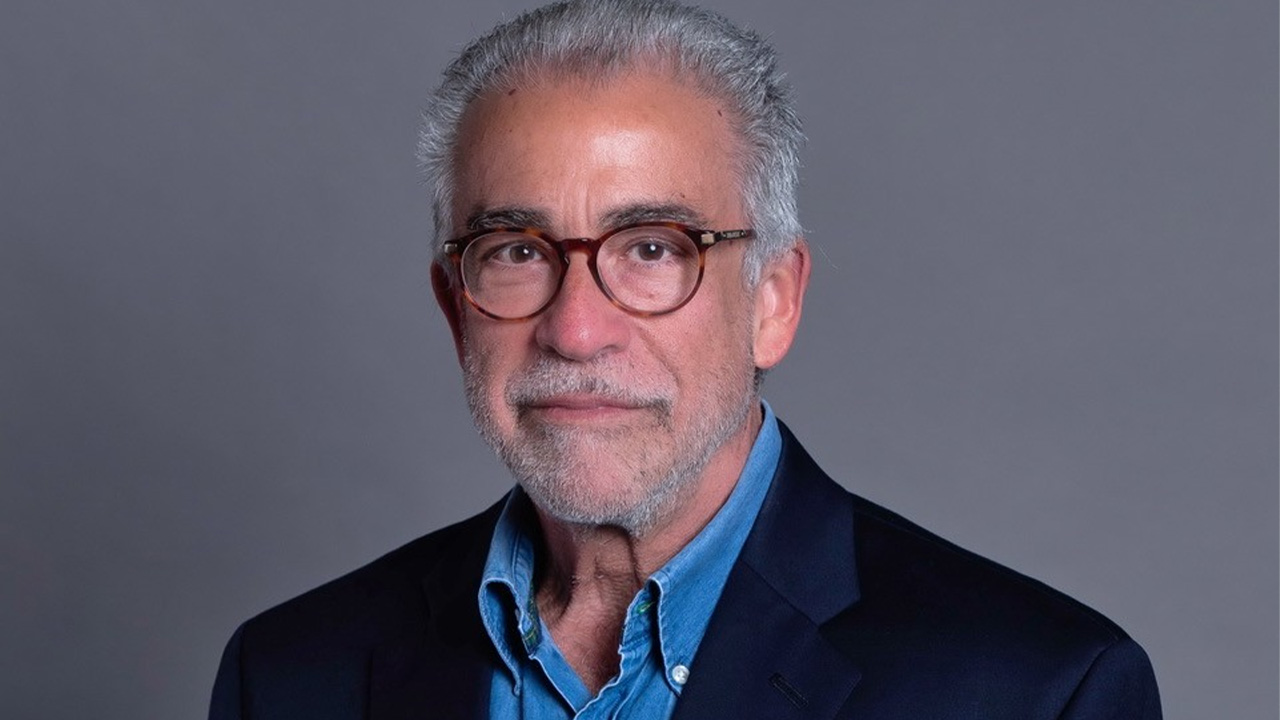Gerard van Grinsven has gone from serving up drinks as a bartender to serving up innovation as a CEO in health care.
Sounds incongruous? The career thread for the current CEO of Cancer Treatment Centers of America (CTCA) is one that has focused on people, whether they are on the other side of the bar, dining at fine restaurants or giving care to patients who may be in the fight of their lives. His career odyssey has taken him from his native Netherlands all over the world, including stops in Hong Kong, Manila, Berlin, Seoul, Atlanta, Detroit and Boca Raton, where CTCA moved earlier this year.
Discovering a career
Van Grinsven grew up in Maastricht, Netherlands, a Roman-era city surrounded by hills and castles. He had wanted to be a professional soccer player, but hurt his ankle at 17. “I was depressed for a year because my boyhood dream fell apart,” he says. He soon fell in love with a bar and became a bartender there. That’s when he says he started to really understand people, their unexpressed needs and how different people need to be treated different ways.
Van Grinsven pursued a hotel management degree in Maastricht, but wasn’t focused and barely managed to finish his first year, he says. His parents threatened to kick him out. After graduation, at age 22, he was maître d’hôtel for the top restaurant at Mandarin Oriental in Jakarta, Indonesia. “I had no clue what it was all about,” he says. “What I did know was people.”
He asked the general manager if he could borrow his car and driver so that he could knock on doors and invite people to visit the restaurant. Their response, he says, was, “Look at this young kid, give him a chance.” Van Grinsven would ensure guests were spoiled when they came, bringing out the top chef and the pastry chef and giving away appetizers. “I became the whiz kid at Mandarin Oriental,” he says, in a tone that’s more amazed than boastful. He eventually doubled the restaurant’s lunch and tripled its dinner business.
Van Grinsven was then promoted to assistant food and beverage director at Mandarin Oriental, Bangkok. The 60th birthday of the king of Thailand brought a host of royalty and global leaders, including President Ronald Reagan. Just 24 at the time, he had to welcome them and was in charge of the banquets.
As a manager, he showed a personal touch by taking his staff, whom he called stakeholders, and their families to monthly picnics. “I took care of them and they took care of me,” he says.
The restaurant guru
Van Grinsven found it challenging to get promotions since Mandarin Oriental only had four hotels at the time, so he joined the new Ramada Renaissance in Hong Kong, where he created The Bostonian Restaurant (�upscale, but with paper tablecloths and crayons�) and Capriccio (�the first Italian fine dining restaurant in Hong Kong�). To pull off Capriccio, van Grinsven cultivated a relationship with a leading restaurateur in Florence who visited every three months to help set the standards.
Van Grinsven was then recruited by The Peninsula Hotels to be food and beverage director of its Manila property. In his three-and-a-half years there, he went through a 6.5 earthquake, a volcanic eruption and the 1989 coup attempt that saw rebel soldiers take over many key parts of the capital. He was awakened at 4:30 a.m. and whisked to the hotel past tanks.
The hotel, which had 700 guests at the time, had government troops on one side and rebels on the other. Guests were told they needed to sleep on the floor in the restaurant and banquet rooms where the concrete walls would offer protection.
Van Grinsven remembers being on the 10th floor trying to get an American guest to come down. “He said, “I’m coming,” but he took a picture of a sniper on another building. The sniper saw him and shot him in front of me.”
Van Grinsven stopped the guest’s bleeding, put him in an elevator and traveled with him in a Red Cross van to a hospital. The rebels eventually put their arms down after U.S. F-16 fighters flew overhead and everyone was evacuated.
“The guests treated us like heroes because we had protected them,” van Grinsven says. When the staff returned to the hotel, they found 100 rooms full of bullet holes. The guest shot by the sniper not only survived, but came back three months later and gave the staff $50,000 in tips.
Van Grinsven’s next stop was Berlin, which was in a spirit of renewal after the wall came down. He spent 12 months as executive assistant manager in charge of food and beverage at InterContinental Berlin before he was approached by The Ritz-Carlton to help open its new hotel in Seoul.
He was given latitude to depart from Ritz’s usual conservative approach to open what he calls, “unique and sexy food and beverage concepts.”
One concept was the Nicks and Knocks nightclub, which had a 90 percent female customer base of highly educated professional women who would knock down bottles of whiskey. Ritz’s then president, Horst Schulze, was so impressed with van Grinsven’s innovations that he made him senior vice president of food and beverage for the entire company.
Van Grinsven moved to Atlanta, and within 6.5 years, he had opened 73 restaurants in 20 Ritz-Carltons around the world. He came up with the concepts, hired the chefs and then held everyone accountable to his vision.
While he enjoyed learning about the different cultures, his children were almost in their teens and he was growing tired of the traveling.
The stillborn experience
Van Grinsven was offered to run his own hotel in Singapore, Jamaica, Los Angeles or, in what he says seemed like a “you won’t want to do to this” type of offer, in Dearborn, Michigan. The hotel was so dysfunctional that the internal nickname was “The Ritz-Carlton, Stillborn.” The Michigan market was economically depressed and the workers weren’t engaged. He was appalled that only B or C quality managers were being sent there and thought he could make a difference.
Van Grinsven says all he did for three months was meet people. He learned how to valet cars, make beds and check people in. He created a program called “Ritz-Carlton Reborn” and brought in 60 trainers from the parent company. In just one year, the hotel went from being No. 50 out of 50 in employee engagement to No. 5, and guest satisfaction went from No. 29 to No. 9.
The financials also improved dramatically and van Grinsven was put in charge of the Cleveland, St. Louis and Philadelphia Ritz-Carlton properties, where he introduced the same reborn concept. It was subsequently rolled out company-wide. “Imagine how that made my people feel that The Ritz-Carlton, Stillborn, was now dictating the rest of the program,” he says.
An unexpected offer
After years working in hospitality, van Grinsven was surprised when he was offered the position as president of health care provider ER-One by Chairman Dr. Ernest Sorini.
“Dr. Sorini, I know nothing about health care,” he said, but was told, “You don’t need to. You know about people and service… I want you.”
Van Grinsven decided to run the idea by a regular guest of the hotel’s highly rated Grill Room restaurant, Nancy M. Schlichting, who is CEO of Henry Ford Health System. She instead offered him the position as president and CEO of a $350 million hospital that would open in three years. He was intrigued by the idea of bringing his leadership and service approach to a new industry.
It wasn’t easy, since some of the physicians were aggressive to the point of nastiness about how someone without health care experience could run a hospital. Eyes widened when he had his first meeting with physicians after three weeks on the job. “I want to be the Cirque du Soleil of health care,” van Grinsven says he announced. “Nobody spoke. In their eyes, I could read, “This CEO is wild.”” But he kept going, and encouraged everyone to read “Blue Ocean Strategy: How to Create Uncontested Market Space and Make Competition Irrelevant.”
The concept was that the hospital field was like many other industries: Everyone copies one another rather than differentiating themselves. Van Grinsven wanted to be innovative, much like Cirque du Soleil was.
What emerged was a medical center for educating the community about how to stay healthy. It included all organic food, a hydroponic green house, cooking classes linked to TVs in patient rooms and a medical spa. The competition was laughing at him, van Grinsven says. “Their attitude was that we were going to fail miserably.”
However, the hospital was 18 months ahead of schedule in being cash-flow positive and had the lowest readmission rates and lengths of stay in the area. And both patient and employee engagement were stellar. “If you walked into the hospital, it didn’t feel like a hospital,” Van Grinsven says. “We had weddings in the atrium. We had patients looking down because it lifted their spirits. Nurses were against it, but when they saw what it did to patients, they said it was incredible.”
Cancer hits his family
Unfortunately, van Grinsven saw the flip side of care as his father underwent a five-year battle with cancer. He had good clinical care in Maastricht, but he didn’t get enough emotional support, van Grinsven says.
Two weeks after his father died, he received a call from CTCA. He liked what CTCA founder Richard J. Stephenson had accomplished. “What he did 30 years ago was gutsy and bold,” van Grinsven says. “He bought that tiny little hospital in Zion [Illinois] and said, “I want to change the face of cancer care.””
Stephenson told van Grinsven that he wanted a more positive business environment for the company headquarters, which was located in the high-tax state of Illinois. The state didn’t provide incentives to stay and the relocation search led to CTCA moving to Boca Raton.
“When I came here with the team, the way we were received was extraordinary,” van Grinsven says. He credits Palm Beach County’s leaders with doing whatever it takes to attract more business, and adds that, “The quality of life for stakeholders is extraordinary.”
He liked having three major airports nearby, the state’s rapid growth and location.
Although there are no plans to open a hospital in Florida, he says, “If I stick my hand out this window, I can touch Latin America. Cancer has no borders.”
International growth
Two months ago, CTCA opened its first international office in Mexico City in a partnership with eight oncologists there. CTCA will help with best practices, give second opinions and be in position to treat patients in the U.S. if necessary. The program could expand further into Latin America, says van Grinsven, who wants CTCA to be the No 1. cancer care provider globally.
While CTCA has been criticized for being a for-profit organization in the field of cancer care (�People frown that it’s all about making money on the back of your patients�), van Grinsven says the profits allow for additional spending on what’s good for the patients.
CTCA invests heavily on the right technology and spends about $5 million a year funding research at places such as Memorial Sloan Kettering Cancer Center, MD Anderson Cancer Center, Cleveland Clinic and Johns Hopkins University. Van Grinsven’s vision is to raise that to $30 million or more.
The company has also spent $20 million supporting the American Society of Clinical Oncology’s Cancer Link Initiative, which helps ensure that all physicians, even those in rural areas, have access to the latest research and treatment plans for patients, he says. “We don’t think it’s about CTCA. It’s about the patients. It’s about the mother standard: Treat everyone like they are your own mother, father or uncle.”
CTCA is also a significant partner for Stand Up To Cancer, which raises about $400 million a year. The effort has included dream teams of researchers from different institutions to attack specific types of cancers. CTCA is also forming similar teams internally and landed Dr. Maurie Markman, previously vice president of clinical research at MD Anderson, to be its president of medicine and science.
CTCA has faced questions about its integrative approach’s use of alternative medicine, such as acupuncture and homeopathic treatments, but van Grinsven finds it funny when people in health care say there is no evidence it works. “Give me one example of any medicine that works 100 percent,” he says. “We have a strong belief that we are not here to treat the disease, we are here to treat the whole person. We have people coming to us extremely fearful. They see their whole life falling apart. These people need emotional connectivity. We are not there just to treat the disease, but all the issues they are dealing with.” Why wouldn’t CTCA want to pay attention to alternative therapies that have been used for 2,000 years and have the ability to reduce side effects from treatments, he says.
Some 80 percent of cancer patients use alternative medicine, but only 30 percent tell their physicians, so there’s a safety issue for them to do so without guidance, van Grinsven adds. If Reiki or massages make people feel better, he sees that as a positive.
Reiki, which was developed in the 1920s in Japan, involves laying on one’s hands. It is sometimes labeled as “pseudoscience,” as it hasn’t been proven scientifically, but some major cancer organizations recognize it as a supplement to medical care to promote a sense of well-being. CTCA’s integrative approach also includes an emphasis on nutrition, because more than half of cancer patients die from malnutrition, van Grinsven says.
CTCA faced a controversy a few years ago when Reuters questioned whether its survivor numbers were overinflated because the pool of patients it used wasn’t comparable to other cancer centers.
CTCA refined and revised how it shares the data to address the concerns, the company says. That included the manner in which readers were invited to compare and the time period for the comparisons.
CTCA says it was the first cancer care provider in the country to post treatment results publicly, and today posts results for more cancer types than any other provider.
“Providing this kind of transparency is always accompanied by the risk of criticism, but we feel prospective patients should be informed about the performance of a provider as they evaluate their treatment options,” the company said in a statement.
Another past controversy is about how committed CTCA is to treating patients who may not have great health care insurance, but van Grinsven says the company has opened up access as it has matured and embraces Medicare in four of its five hospitals. It’s adding more insurance payers to its mix.
CTCA is focused on negotiating pay for performance, which provides more money from insurers if the company exceeds its peers in care. “I think it’s good because it holds us accountable,” he says. CTCA also helps bring patients to organizations for the right treatment, regardless of whether it’s CTCA or elsewhere.
So what’s next? In shades of what he did in Dearborn, van Grinsven has launched “Reimagine” to spend 18 months creating a vision of how to position CTCA for the next five years. One of the key questions, he says, is: “Are we prepared to change according to where cancer care will go?” ?
Cancer Treatment Centers of America history
1988: Richard J. Stephenson founds the company after disappointment about the care his mother, Mary, received before she died a few years earlier. CTCA opens the American International Hospital in Zion, Illinois, near Chicago. It offers surgery, chemotherapy and radiation therapy, as well as immunotherapy, nutrition, mind-body medicine and spiritual support.
1990: CTCA opens its second hospital in Tulsa in a complex that includes Oral Roberts City of Faith.
1991: Groundbreaking is held to expand the Zion hospital.
2005: The Tulsa hospital moves to a new building and the Eastern Regional Medical Center opens in Philadelphia.
2008: Western Regional Medical Center opens in the Phoenix suburb of Goodyear, Arizona.
2012: Southeastern Regional Medical Center opens in the Atlanta suburb of Newnan, Georgia.
2015: CTCA moves its headquarters to Boca Raton.



